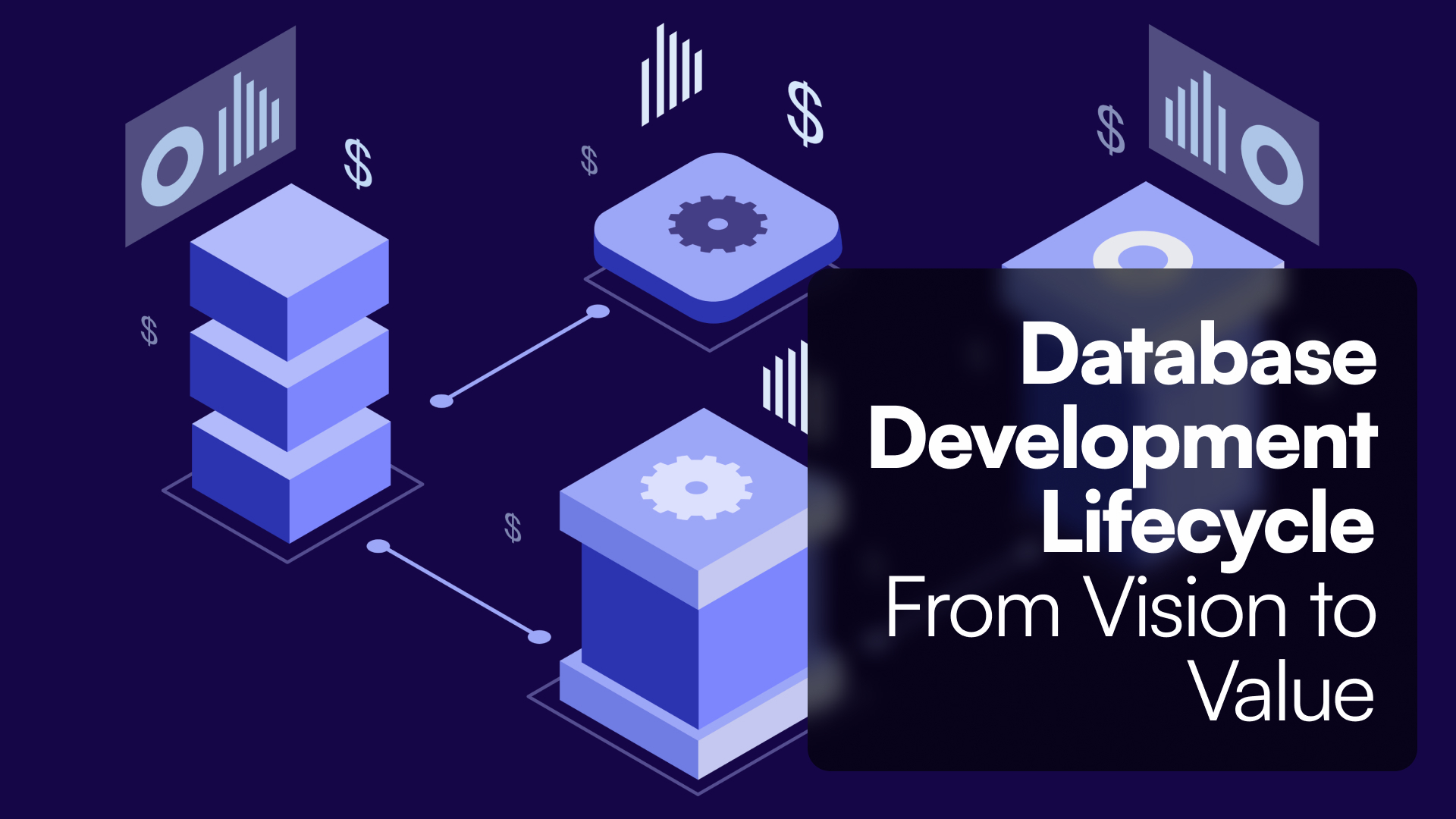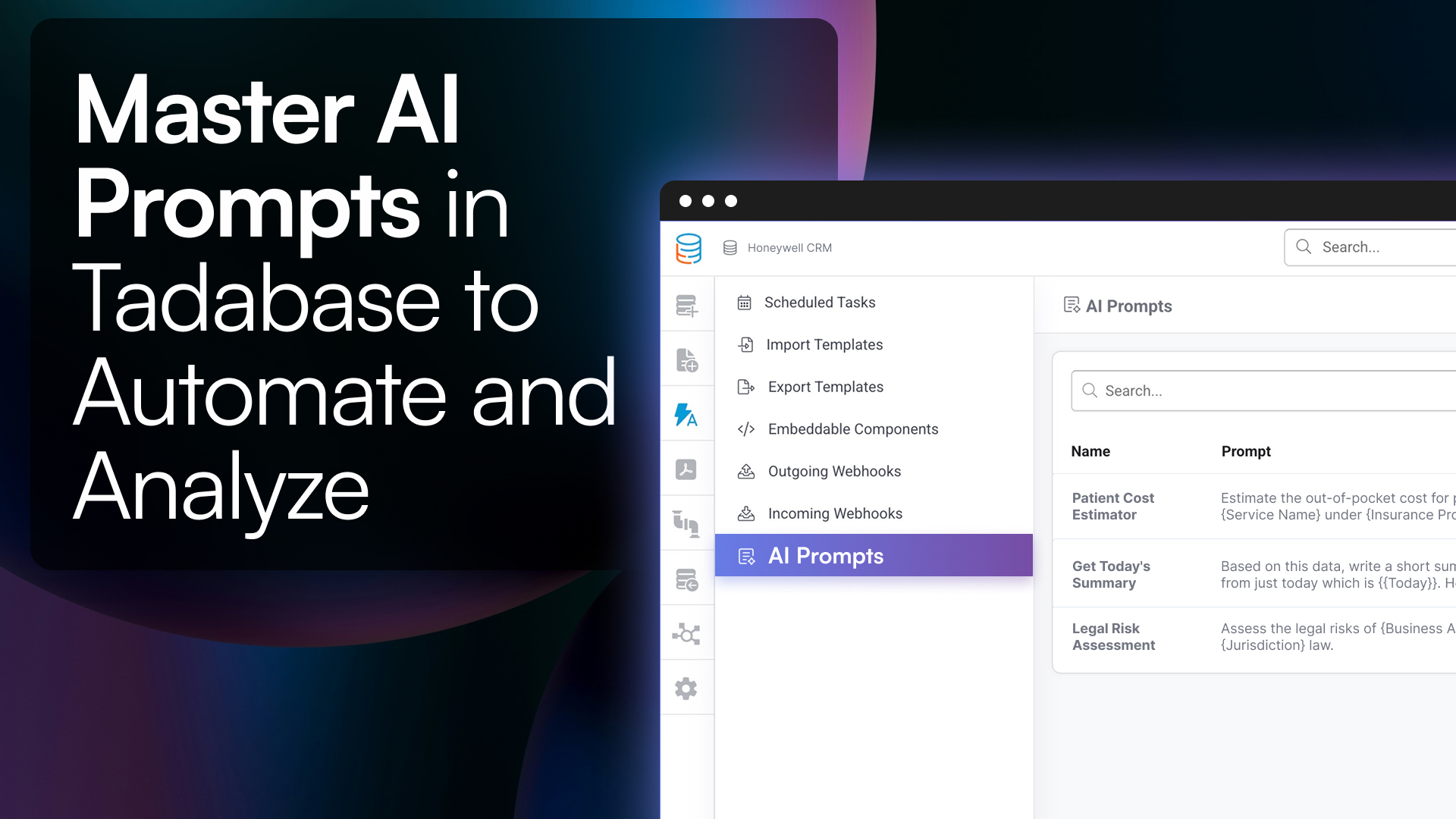Introduction
Most CRM tools are built for the masses, not for how your business truly operates. That’s where custom CRMs come in. A custom CRM (Customer Relationship Management system) is purpose-built to match your exact workflows, roles, and data logic. Instead of fitting your processes into someone else’s software, you build the system around how your team actually works.
In this complete guide, you'll learn:
-
When to build versus buy a CRM
-
Core features every custom CRM should include
-
The best custom CRM platforms available in 2025
-
A 6-step plan to build your own
-
Cost and time benchmarks
-
Use cases across industries
-
Mistakes to avoid and next steps
And why no-code tools like Tadabase let you launch custom CRMs in days—not months.
Want to skip ahead and build your CRM today? Try the Tadabase CRM Template—prebuilt with drag-and-drop logic, roles, and workflows.
Best Custom CRM Platforms for 2025
Choosing the right platform depends on how much control you need, how fast you want to launch, and whether you're technical or not. Here’s a breakdown of the best options, each with a clear niche:
-
Tadabase – Best overall for internal business CRMs and no-code builders. Ideal for operations, cross-department workflows, and fast deployment.
-
Salesforce – Best for large enterprises that need complete customization with developer resources.
-
Quickbase – Great for operations teams needing powerful low-code logic, especially in data-heavy workflows.
-
Knack – Solid entry-level choice for small teams needing a lightweight no-code CRM.
-
Caspio – Best for industries with strict data compliance needs (HIPAA, SOC2).
-
Zoho CRM – Best out-of-the-box customizable CRM with deep integrations.
-
Monday.com – Great for visually managing light CRM tasks alongside project work.
-
Zendesk Sell – Best for support-driven teams with integrated sales touchpoints.
Explore more CRM tools in our full comparison guide
Platform Comparison Snapshot
| Platform | Ideal For | Customization Type |
|---|---|---|
| Tadabase | SMBs, ops, internal systems | Full no-code |
| Salesforce | Enterprises, dev teams | Full-code & app builder |
| Quickbase | Data-heavy ops teams | Low-code |
| Knack | Small teams | No-code (moderate) |
| Caspio | Compliance-heavy industries | Low-code + security |
| Zoho CRM | Modularity + integrations | Scripting/custom fields |
| Monday.com | Visual PM + CRM | UI-focused, limited logic |
| Zendesk Sell | Sales + support workflows | Light custom fields |
Should You Build or Buy a Custom CRM?
Build a custom CRM when:
-
You’ve outgrown general tools like Zoho or HubSpot
-
Your team depends on workarounds and spreadsheets
-
Compliance or role-based access is essential
-
You want to own the system, not rent it
Buy (customizable) CRM when:
-
You need a plug-and-play solution
-
Workflows are simple, generic, or sales-only
-
You’re okay with vendor structure and limitations
Custom vs Customizable CRM
| Feature | Custom CRM | Customizable CRM |
| Data Model | Fully defined by you | Fixed with minor edits |
| Workflow Logic | Role-based, custom | Prebuilt flows only |
| Ownership | Full (you host/manage) | SaaS subscription |
| Time to Deploy | Days–weeks (Tadabase) | Immediate |
| Cost Model | One-time or flat pricing | Per-user or feature fee |
What Every Custom CRM Should Include
-
Custom Data Models: Define entities like Clients, Projects, Invoices
-
User Roles & Permissions: Restrict views/actions by team
-
Workflow Automation: Trigger actions based on rules or events
-
Dashboards: Personalized, role-specific views
-
Mobile Access: Responsive interfaces for on-the-go use
-
Integrations: APIs, webhooks, or tools like Zapier
Cost and Timeline Benchmarks
| Platform Type | Deployment Time | Cost Estimate |
| No-code | 3–14 days | $0–$10K/year |
| Low-code | 4–8 weeks | $10K–$50K/year |
| Full-code | 3–6+ months | $50K–$200K+ |
-
Annual Maintenance: Budget 10–20% of build cost
-
Tadabase Bonus: No per-user pricing, scale flexibly
6-Step Plan to Build a Custom CRM
-
Define Your CRM Goals
-
What’s inefficient today? (Spreadsheets, missed leads?)
-
What metrics or workflows should improve?
-
-
Map Your Workflows & Roles
-
Diagram how teams interact
-
Clarify what each user type needs
-
-
Design Your Data Model
-
Start with 3–5 core entities (e.g., Leads → Deals → Clients)
-
Build only what’s essential in v1
-
-
Choose a Platform That Fits
-
No-code: Tadabase = full flexibility + fast deployment
-
Low-code: Use if scripting/IT involvement is okay
-
Full-code: Use only if deeply custom logic or compliance
-
-
Build Core Modules
-
Lead pipeline
-
Client database with activity logs
-
Role-based dashboards
-
Key automations
-
-
Test, Launch, and Iterate
-
Launch to 1–2 teams
-
Use weekly feedback cycles
-
Expand features based on usage
-
Use Cases by Industry
Real Estate CRM
-
Track listings, showings, and buyer preferences
-
Automate agent follow-ups and documentation
Healthcare CRM
-
HIPAA-compliant patient engagement
-
Appointment and care plan tracking
Logistics CRM
-
Dispatch coordination and multi-party workflows
-
Audit trails for chain-of-custody tracking
Financial CRM
-
Client portfolio management
-
Document vaults and compliance logs
Internal Business Ops CRM
-
Cross-department handoffs
-
Employee request tracking and project approvals
Why Tadabase Is Built for Custom CRM
Tadabase offers:
-
A visual builder to create objects, logic, and layouts
-
Advanced automations with no scripting
-
Custom UI, dashboards, and permissions
-
Responsive design for all devices
-
API/webhook support for real integrations
"We launched our ops CRM on Tadabase in 5 days and replaced 7 spreadsheets." — COO, Logistics Firm
Get started in hours—not weeks—with our Custom CRM Template
Mistakes to Avoid When Building
-
Overdesigning v1: Start lean. Avoid bells and whistles.
-
Skipping user feedback: Involve users before rollout
-
No mobile-first design: Everyone uses phones—design for it
-
No review cadence: Schedule quarterly CRM tune-ups
Frequently Asked Questions
How long does it take to build a custom CRM?
Timelines vary by platform type. No-code tools like Tadabase typically take 3–14 days. Low-code platforms can take 4–8 weeks. Full-code builds may require 3–6 months or more, depending on scope.
Can I build a CRM without developers?
Yes. No-code platforms like Tadabase allow non-technical users to create fully functional CRMs with drag-and-drop logic, built-in workflows, and role-based dashboards—no coding required.
Will my CRM grow with my company?
Absolutely. A well-built custom CRM is designed to scale with your data volume, user base, and evolving workflows. Tadabase, for example, supports flexible scaling without per-user pricing.
Can a custom CRM connect to other tools?
Yes. Modern CRMs like Tadabase support REST APIs, webhooks, and third-party automation tools like Zapier for integrations with Slack, QuickBooks, email platforms, and more.
What are the most common industries that use custom CRMs?
Industries with complex workflows or compliance needs benefit most—logistics, real estate, healthcare, finance, government, and internal business operations.
Is a custom CRM secure?
Yes—especially if built on a platform that supports role-based permissions, audit logs, encryption, and compliance frameworks like HIPAA or SOC 2.
What if our workflows change over time?
Custom CRMs are inherently flexible. With platforms like Tadabase, you can adapt structures, logic, and permissions without rebuilding the whole system.
What makes Tadabase better than other no-code platforms?
Tadabase combines visual design with back-end logic, real automation, user access controls, and mobile responsiveness—features often missing from other tools focused only on form-building or UI.
Can I import data from Excel or another system?
Yes. You can import data via CSV or connect via API to migrate records from spreadsheets, legacy systems, or other CRMs.
Who manages hosting, backups, and updates?
Tadabase is fully managed in the cloud. No server setup, no update worries, and backups are included. You focus on building—Tadabase handles the rest.
What’s Next?
Conclusion
Custom CRMs aren’t just for enterprises—they’re for any business tired of bending their workflows to fit generic software. Whether you’re managing leads, tracking complex client engagements, or building role-based approval chains, a custom CRM lets you control every detail.
And with no-code platforms like Tadabase, you can skip long timelines and expensive developers—and launch a CRM built exactly for your process.
Own your CRM. Own your growth. Build smarter with Tadabase.








